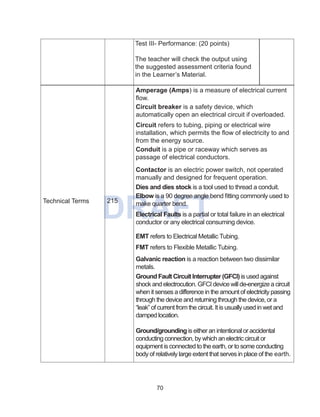This document is a teacher's guide for a course on electrical installation and maintenance. It provides guidance for teachers to effectively teach topics related to personal entrepreneurial competencies. The guide discusses introducing real-life examples of successful professionals, assessing students' competencies, and helping students create a plan of action. It also outlines objectives, presenting content, and providing feedback and references for teachers. The overall aim is to help students understand and strengthen competencies needed for careers in electrical work.













































































